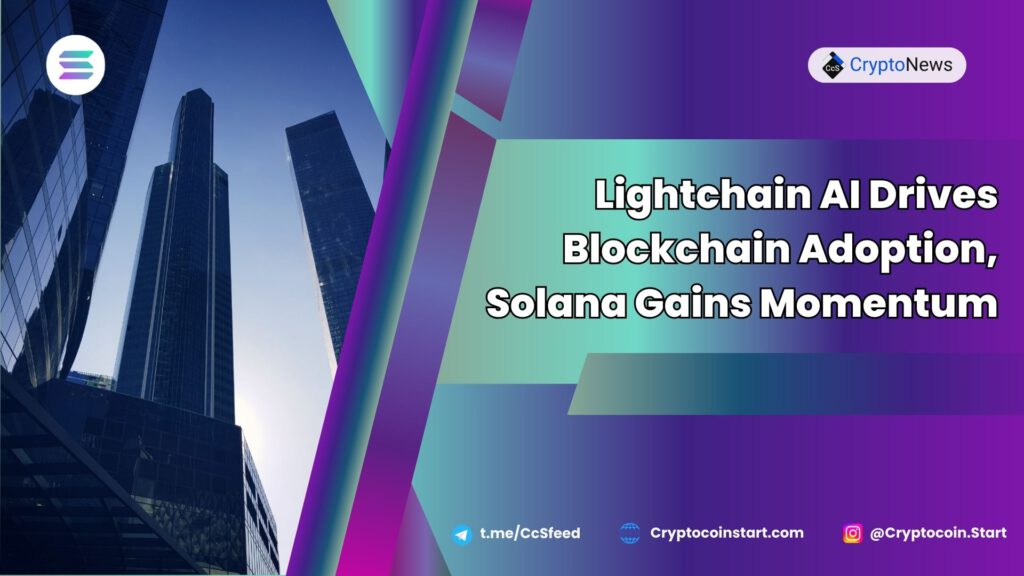
Solana: Pioneering Speed and Scalability
Solana is known for its remarkable ability to process transactions at high speeds, making it a preferred blockchain platform for decentralized applications (dApps) and other high-performance use cases. Here are some key features that make Solana stand out:
- Proof of History: Solana utilizes Proof of History (PoH), a novel consensus mechanism that acts like a clock, ordering events and enabling the network to process up to 65,000 transactions per second (TPS).
- Fast Block Time: With a block time of approximately 400 milliseconds, Solana offers rapid transaction processing.
- Low Transaction Costs: Solana maintains extremely low transaction fees, with each transaction costing around $0.00025.
- Expanding Ecosystem: Solana’s speed and scalability make it a strong choice for developers in the DeFi and NFT sectors, powering a growing number of decentralized applications.
These innovations make Solana an attractive option for developers seeking to build large-scale, high-speed applications that operate in a decentralized environment without centralized control.
Lightchain AI: Revolutionizing Blockchain Adoption
While Solana excels in speed, Lightchain AI takes blockchain innovation to the next level with its unique focus on artificial intelligence (AI) and adaptive scalability. Here’s how Lightchain AI is making its mark:
- AI-Driven Optimization: Lightchain AI incorporates AI at its core to optimize blockchain performance, ensuring faster and more efficient transaction processing.
- Scalable Network: The platform is designed to adapt to growing demand, allowing the network to scale seamlessly in response to increasing user activity and transaction volumes.
- Cross-Chain Compatibility: Unlike Solana, which is confined to its own ecosystem, Lightchain AI offers cross-chain compatibility, enabling seamless integration with multiple blockchains and enhancing interoperability across different platforms.
- Focus on Enterprise Adoption: Lightchain AI is positioning itself as a transformative force for enterprise blockchain solutions, offering scalable, secure, and efficient solutions for businesses looking to adopt decentralized technology.
With these advanced features, Lightchain AI aims to solve key inefficiencies in the blockchain space, unlocking new possibilities for decentralized applications and enterprise adoption.
Two Leaders, Two Approaches
Both Solana and Lightchain AI are driving blockchain innovation, but they cater to different needs within the industry. Here’s a comparison of their strengths:
- Solana: Solana excels in speed and scalability, making it ideal for decentralized finance (DeFi) and NFTs. Its growing ecosystem and rapid transaction speeds provide an excellent foundation for developers building high-performance applications.
- Lightchain AI: Lightchain AI focuses on scalability, interoperability, and AI-driven optimization, positioning it as a key player in the enterprise blockchain space. Its cross-chain compatibility and adaptive scalability offer significant advantages for businesses looking to integrate blockchain technology.
For investors and developers, Lightchain AI presents a unique opportunity to engage with a project that combines cutting-edge AI technology with practical blockchain solutions. Its focus on enterprise adoption and cross-chain functionality makes it an exciting option for those looking to participate in the next phase of blockchain evolution.
Conclusion: The Future of Blockchain Technology
Solana and Lightchain AI represent two powerful forces in the blockchain space, each with its own strengths and unique approach. Solana’s speed and scalability make it a go-to platform for DeFi and NFT projects, while Lightchain AI’s focus on AI-driven optimization, scalability, and cross-chain compatibility positions it as a leader in the enterprise blockchain sector. As the blockchain landscape continues to evolve, both projects are poised to play a key role in shaping the future of decentralized technologies.

